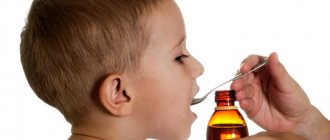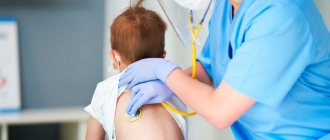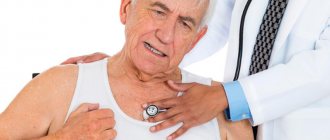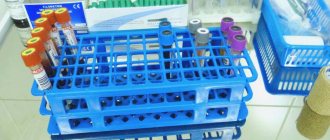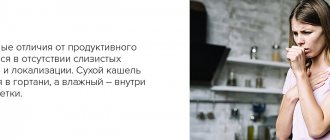Echinacea herb is an antibiotic and antiseptic of natural origin. Often used during exacerbation of seasonal diseases.
- How to take Echinacea for children
- Echinacea during pregnancy
- How to make echinacea tincture
- How to brew echinacea tea
- How to take Echinacea tablets
- How to take echinacea for a cold
- How to drink echinacea for prevention
- How to drink echinacea to boost immunity
Indications for use
Echinacea has a wide range of uses. The medicine can be used to treat various diseases and for their prevention. The drug is often used as part of complex treatment.
Also, echinacea monopreparations are effective in the following cases:
- metabolic problems and related diseases (diabetes mellitus, liver disease);
- stress and depression;
- inflammatory processes;
- infectious diseases;
- female and male infertility (complex treatment);
- after surgery and prolonged use of antibiotics;
- problems with potency;
- skin lesions.
Pharmacological properties of the drug Echinacea-ratiopharm
Immunostimulating agent of plant origin. A preparation of Echinacea purpurea, a perennial plant of the Asteraceae family. The active components of the Echinacea purpurea herb extract include hydrophilic substances (polysaccharides, glycoproteins, organic acids and their derivatives), which stimulate phagocytosis and have an anti-inflammatory effect, and lipophilic substances (essential oils containing terpene carbohydrates, polyacetylenes). The effect of substances of a lipophilic nature is manifested in the intensification of phagocytosis, an increase in the concentration of corticosteroids (anti-inflammatory factors) in the blood, an increase in the number of leukocytes, interleukin (activator of T- and B-leukocytes, NK cells, macrophages), tumor necrosis factor with an increase in the concentration of properdin in the blood and stimulation of the alternative complementary activation mechanism. As a natural immunostimulant, Echinacea primarily affects the nonspecific immune system, independent of antigens and antibodies. By increasing the body's defenses, Echinacea has a positive effect in various pathological conditions in both adults and children, as well as in older people whose immune system functions are reduced. Echinacea can be used for diseases associated with depletion of the functional state of the immune system, which are caused by chronic inflammatory diseases, exposure to ionizing radiation, ultraviolet radiation, chemotherapy drugs or long-term treatment with antibiotics. Echinacea has antibacterial and antiviral effects; extracts inhibit the growth and reproduction of streptococci, staphylococci, E. coli, influenza and herpes viruses. The drug is well absorbed from the digestive tract after oral administration. Excreted in urine and feces. The pharmacokinetics of the drug in elderly people and patients with renal failure does not differ significantly from that in young patients with normal renal function.
Adverse reactions
In some cases, side effects are possible:
- stomach upset;
- increased fatigue, dizziness;
- high body temperature;
- skin rash.
Long-term side effects such as liver disease and a weakened immune system are also possible. Such effects may occur if you do not follow the instructions.
Pregnant and breastfeeding women, as well as those with pollen allergies, should take with caution.
How to take Echinacea for children
Pediatricians often advise parents to give echinacea to ease the course of the child’s illness and reduce the duration of the illness. It is effective for runny nose, flu and colds. Only a doctor can determine the appropriate dose. Even a harmless decoction or tea can harm a child if self-medicated. Echinacea in syrup form is best for babies. The treatment regimen is as follows:
- Up to 2 years – 1 tsp. a glass of water 2 times a day;
- 3-5 years – 2 tsp. 250 ml of water 2 times a day;
- 5-15 years – 1 tbsp. l. per day (does not need to be diluted with water).
Echinacea preparations in the treatment and prevention of respiratory infections
In Russia, economic losses from influenza per year are estimated at 10 billion rubles. [4], which emphasizes the social significance of the incidence of influenza and acute respiratory infections.
It is quite difficult to estimate the actual mortality due to influenza, and it is for these reasons that it is customary to talk about excess mortality during epidemics. The maximum mortality rate from influenza (35%) is observed among children under 2 years of age. As a direct cause of mortality, influenza is registered in 25% of cases; the share of the influenza virus as the causative agent of acute respiratory infections is about 6.2–12.6% [4]. About 200 viruses, including adenoviruses, rhinosyncytial virus, parainfluenza viruses, metapneumovirus, as well as Mycoplasma and Chlamydia pneumoniae, can cause symptoms of respiratory infections, which raises the challenge of creating appropriate specific vaccines and developing methods of nonspecific prevention. Vaccines have been developed against influenza, Streptococcus pneumonia, Haemophylus influenzae, but they cannot provide specific prevention in the presence of a variety of pathogens of respiratory infections. Conducted studies indicate mixed infections in acute respiratory infections, especially in the risk group, in people with impaired immune systems, and children with delayed development of the immune system.
Our studies of frequently ill children (FIC) with an acute respiratory infection rate of 6 or more cases per year and chronic diseases (CD) of the nasopharynx and oropharynx demonstrate mixed viral-bacterial infections in them, the persistence of the bacterial flora of the nasopharynx and oropharynx. 180 children aged from 2 to 15 years were examined. Of these, a group of ChBD-CZ (n=120) was identified with CZ of the oropharynx and nasopharynx (hypertrophy of the adenoids and tonsils, lymphadenopathy, chronic sinusitis and tonsillitis) and episodes of acute respiratory infections of 6 or more times per year. These children made up the main group. The remaining 60 children formed the control group. The groups are comparable by gender and age. The children's belonging to the CBD group was determined taking into account the criteria proposed by V.Yu. Albitsky and A.A. Baranov (1986) [38].
A microbiological examination of children in both groups revealed some differences in the microbial landscape of the pharynx and nasal passages. As can be seen from the data presented in Table 1, in children of the BBD-CZ group with CZ of the upper respiratory tract, not only monocultures, but also microbial associations were more often sown. In this group, the number of pathogens ranged from 105 to 108 colony-forming units (CFU)/ml, and in the control group - from 103 to 105 CFU/ml. The difference is statistically significant when comparing the results of sowing S. аureus, S. haemolyticus, Str. haemolyticus-β, Str. viridans, Klebsiella pneumoniaе, Haemophilus influenzae, Candida albicans, microbial associations St. aureus + Str. haemolyticus-β, St. aureus + Candida albicans (p<0.05).
The presence of mixed infections in acute respiratory infections and the small selection of specific vaccine prophylaxis raise the challenge of developing methods and drugs for nonspecific prevention of acute respiratory infections. For nonspecific prevention and complex treatment of acute respiratory infections, immunotropic drugs are used, which can affect several parts of the immune system, the production of cytokines, since the work of the immune system is realized through T-, B-cells, natural killer cells (NK cells), macrophages and mediators (interferons (IFN), interleukins (IL)).
Classifications of immunotropic drugs were proposed by R.M. Khaitov, B.V. Pinegin (1996); R.I. Sepiashvili (2000); I.V. Nesterova, A.A. Starchenko, S.A. Ivanova, A.S. Simbirtsev (2002); T.P. Markova (2003, 2005) [5–9]. Table 2 provides a classification of immunotropic drugs based on their origin [7], and lists the most well-known drugs.
Among the drugs listed in the classification, echinacea preparations, bacterial lysates, IFN, and inducers of IFN production are most often used in the complex treatment and prevention of respiratory infections [4, 7, 10, 13]. Of interest are drugs that have both antiviral and immunotropic effects [4, 11, 12, 29]. Among immunotropic drugs of plant origin, the mechanism of action of frequently used drugs derived from Echinacea, for example, the drug Immunal®, has been well studied.
Echinacea (Echinacea angustifolia, Echinacea purpurea, Echinacta pallida), described by Carl Linnaeus in 1753, belongs to the Aster family, reaches a height of 30–110 cm. Grows in North America. In Europe, Echinacea purpurea is more studied. Echinacea flowers are pink or purple in color, similar to a sunflower. The Indians also used echinacea to treat infectious diseases, calling the plant “snake root” because of its effectiveness against snake bites, poisonous insects and burns [14].
Echinacea is rich in polysaccharides and phytosterols, which have a stimulating effect on the immune system. The root of Echinacea purpurea contains the glycoside echinacoside, which has an antimicrobial effect, volatile oils and pyrrolizidine alkaloids (tussilagin and isotussilagin). The active components of the above-ground part of the plant are caffeic and ferulic acids and their derivatives (chicoric acid, echinocaside) [15]. Polysaccharides derived from Echinacea have antimicrobial, antifungal and cortisone-like activity, promoting wound healing and suppressing inflammation. The roots and aerial parts of the plant contain betaine, rutin, phytosterol, flavonoid glycosides, saturated and unsaturated fatty acids. All parts of the plant contain macro- and microelements: iron, zinc, selenium, potassium, calcium, molybdenum, silver, cobalt, nickel, barium, beryllium, vanadium, manganese [14]. Freshly squeezed juice of Echinacea purpurea enhances phagocytosis in in vitro studies [16, 17].
Macrophage link, NK cells, IFN are indicators of innate immunity, which is the first line of defense during infections. When prescribing Echinacea preparations, volunteers experience an increase in phagocytosis, immunoregulatory index, functional activity of B-lymphocytes, and induction of IFN synthesis. The effect of Echinacea manifests itself in different age groups when the immune system is impaired [18, 20]. The safety and effectiveness of echinacea preparations in the treatment and prevention of acute respiratory viral infections were studied in 234 studies [23], which included adults and children [22].
In the experiment, peritoneal macrophages of mice under the influence of echinacea produced TNF, IL-1, IL-6, IL-10. Under the influence of arabinogalactones, macrophages synthesized IFN, which causes an antiviral effect [15].
Prevention of respiratory infections
Evaluation of the effectiveness of the drug Immunal® for the prevention of influenza and ARVI was carried out in groups with round-the-clock stay, organized meals, communication in training rooms and barracks. Team No. 1 consisted of sailor recruits. Team No. 2 consisted of 1st and 2nd year cadets of the military university, who were in barracks condition, and was formed for 6 months. or 1.5 years ago and was distinguished by sufficient adaptation to the conditions of service. The study of the drug Immunal® was carried out in comparison with placebo (apple juice with the addition of a 40% alcohol solution, reminiscent of Immunal® in color and smell) 1.5 ml 2 times / day as an additive to tea or compote for 4 weeks . The drugs were encrypted, the groups were formed by random sampling. An influenza epidemic was registered in St. Petersburg and lasted 6 weeks. The medication was started 1 week before. before the epidemic. In the group receiving Immunal®, 33 people (15.6%) fell ill, and in the group receiving placebo - 50 people (28.4%); the difference is statistically significant. Influenza A virus (H3N2) was isolated from patients. In the group receiving placebo, prolonged course and complications after influenza were observed 2.5 times more often, and episodes of ARVI were 1.82 times more likely. The authors believe that the administration of the drug Immunal® for the prevention of influenza and ARVI is effective in organized groups with a high risk of cross-infection. According to researchers, it is optimal to take Immunal® for 2 weeks, then take a week break and repeat the dose for another 2 weeks. [19].
The preventive effectiveness of the drug Immunal® was studied in 10 patients with frequent acute respiratory viral infections (at least 4 times a year), in 10 patients with recurrent herpes viral infection (frequency of at least 4 times a year), in 10 patients with chronic tonsillitis (frequency more than 5 r./year) and in 8 patients with chronic bronchitis. The age of the patients ranged from 22 to 55 years. With the development of acute symptoms of these diseases, patients were prescribed etiotropic or symptomatic therapy. A statistically significant decrease in the number of episodes of ARVI (by 50%) and relapses of chronic tonsillitis was observed. The effect on the frequency of relapses of herpes viral infection and chronic bronchitis was not significant. Patients in the control group, similar in gender, age and presence of diseases, received similar therapy without the prescription of the drug Immunal® [21].
The use of herbal preparations is safer if a person does not have allergic reactions, but such preparations must be used for a longer period. Echinacea preparations can be used for a minimum of 1 week, and for a maximum of 8 weeks. Before prescribing echinacea preparations to patients with cancer, autoimmune diseases, and tuberculosis, it is necessary to obtain specialist advice. Contraindications: collagenosis, multiple sclerosis, leukemia, HIV infection, allergic reactions. In some cases, hypersensitivity reactions may develop: skin rash, itching, dizziness, bronchospasm, angioedema, Stevens-Johnson symptom, anaphylactic shock [14].
Preparations Immunal® and Immunal® plus C contain the juice of freshly harvested Echinacea purpurea herb. This ensures the preservation of the natural composition and activity of the ingredients. The dosages of Immunal® and Immunal® plus C are given in Table 3.
Immunal® plus C is a combination of Echinacea purpurea and ascorbic acid (in 1 ml of solution there are 46.5 mg of dried Echinacea purpurea juice and 20.0 mg of ascorbic acid, which is the daily requirement), does not contain alcohol and sugar. The drugs Immunal® and Immunal® plus C can be prescribed from the 1st year of life, which indicates their safety. Ascorbic acid (vitamin C) is an antioxidant that protects cells from damage by free radicals formed during infectious and inflammatory diseases [24]. Ascorbic acid is involved in the development of connective tissue, accelerates regeneration and healing. Vitamin C is involved in the metabolism of vitamin E, the synthesis of L-carnitine, iron absorption, and hematopoiesis processes. Ascorbic acid enhances the immune response, IFN synthesis, phagocytosis and activity of neutrophil leukocytes and monocytes, including stimulating local immunity and mucosal regeneration [26].
Specific therapy for acute respiratory infections includes the antiviral drugs oseltamivir and zanamivir [27, 28]. Rimantadine has antiviral activity against the influenza A virus and reduces the toxic effect of the influenza B virus [23]. Prescribing the drug in the acute period reduces the clinical manifestations of acute respiratory infections in children and adults, especially with influenza A and B [29]. Symptoms of the acute period of acute respiratory infections are a runny nose, nasal congestion, a feverish period, cough, and intoxication. Symptomatic therapy for the acute period includes antipyretic drugs, mucolytics, expectorants, and decongestants.
Antipyretic drugs in children are prescribed when body temperature rises to 38–39°C. The exception is children at risk with concomitant diseases of the cardiovascular system and the risk of developing febrile seizures [30]. Ibuprofen and paracetamol are often used in practice.
To treat cough syndrome, drugs with expectorant and mucolytic effects (bromhexine, ambroxol, acetylcysteine) and inhalations with alkaline degassed mineral water such as Borjomi are used. At the same time, there is an improvement in the functioning of the mucociliary clearance system, a decrease in inflammation of the mucous membranes and the severity of symptoms of intoxication.
To reduce nasal discharge and suppress the symptom of congestion associated with the development of hypersecretion, local inflammation and swelling of the mucous membrane, decongestants are prescribed: oxymetazoline, xylometazoline, tetrizoline, naphazoline, etc. To moisturize, cleanse and rinse the nasal mucosa, preparations containing saline solutions (sea water).
Immunal® in the treatment of respiratory infections
Immunal® plus C can be prescribed in the acute period in the complex treatment of acute respiratory infections. When using a drug containing echinacea, vitamin C and propolis, in 430 children aged 1–5 years, the number of episodes of acute respiratory infections and the duration of the febrile period were 2 times less than in a group of 215 children receiving placebo [25]. When using the drug Immunal® in children with acute respiratory infections and allergic diseases, a reduction in the acute period of the disease was observed, and there was no exacerbation of allergic diseases and allergic reactions [19].
The inclusion of Echinacea purpurea in the complex therapy of ARVI can reduce the duration of the disease [31]. 16 randomized studies, 15 of which were placebo-controlled, showed the effectiveness of echinacea preparations in the acute period of acute respiratory infections, reducing the acute period by an average of 3 days. When drugs are prescribed, the acute period proceeds in a milder form compared to that in the control group (p <0.01) [32, 33]. The good safety profile and tolerability of Echinacea preparations have been confirmed [34].
An analysis of 15 studies involving 7045 patients showed that the administration of vitamin C for respiratory infections reduced the severity of the disease, the number of days off work or absence from school (p = 0.02) [35]. Echinacea preparations have been shown to be effective in volunteers with induced rhinovirus infection - the frequency and severity of clinical symptoms decreased by 55% [36].
In a double-blind, placebo-controlled study, 60 people received echinacea and 60 people received placebo. Patients receiving echinacea showed faster recovery than the control group [37].
Thus, numerous studies conducted from the standpoint of evidence-based medicine show the possibility and effectiveness of using the drugs Immunal® and Immunal® plus C in the prevention and complex treatment of respiratory infections.
RU1403188480
Literature
- Electronic resource www.mossanepid.ru dated September 26, 2008.
- Samsygina G.A., Fitilev S.B., Levin A.M. New approaches to the treatment of acute respiratory infections in frequently ill children (results of a multicenter study under the CHIBIS program) // Pediatrics. 2006. No. 1. P. 24–27.
- Samsygina G.A., Koval G.S. Frequently ill children: problems of diagnosis, pathogenesis and therapy // Attending physician. 2009. No. 1.
- Markova T.P. Prevention and treatment of respiratory infections // RMZh. 2010. T. 18. No. 2 (366). pp. 77–82.
- Khaitov R. M., Pinegin B. V. Immunomodulators and some aspects of their clinical use // Clinical medicine. 1996. T. 74. No. 8. P. 7–12.
- Markova T.P. Immunotropic drugs. Pros and cons // Remedium. 2004. No. 11. pp. 45–49.
- Markova T.P. Immunotropic drugs in clinical practice. In the book: Practical guide to clinical immunology and allergology / ed. R.M. Khaitova. M.: Torus Press, 2005. pp. 30–43.
- Nesterova I.V., Starchenko A.A., Ivanova S.A., Simbirtsev A.S. Immunotherapy and immunotropic drugs. In the book: Handbook of immunotherapy for the practitioner. M.: Dialog, 2002. pp. 88–99.
- Sepiashvili R.I. Classification and basic principles of using immunomodulatory drugs in clinical practice // Allergology and Immunology. 2002. T. 3. No. 3. P. 325–331.
- Romantsov M.G., Goryacheva L.G., Kovalenko A.L. Antiviral and immunotropic drugs in pediatric practice: A guide for doctors. St. Petersburg: MediKa, 2008. 119 p.
- Osidak O. V. et al. Isoprinosine in the treatment of ARVI in frequently ill children // Children's infections. 2008. No. 4. pp. 35–41.
- Markova T.P. Use of Isoprinosine for the prevention of recurrent respiratory infections in frequently ill children // Farmateka. 2009. No. 6. pp. 46–50.
- Volchek I.V. Preventive and therapeutic effectiveness of amixin for influenza and other acute respiratory infections // Terra Medica nova. 2004. No. 4. pp. 25–28.
- Orlova S.V. Encyclopedia of biologically active food additives. M., 1998. T. 1. P. 162.
- Percival SS Use of echinacea in medicine // Biochemical Pharmacology. 2000. Vol. 60. P. 155–158.
- Tympher KD Der immunologishe Wirkungsnackweis von Pflanzenextraken // Z. Angeu. Phytother. 1981. Vol.5. P. 181–184.
- Stotzem CD, Hangerland U., Mengs U. Influence of Echinacea purpurea on the phagocetosis of human granulocytes // Med. Sci.Res. 1992. Vol.20. P. 719.
- Surcic K., Melchart D., Holzmann M. et al. Zwei Probandenstudien zur Stimulierung der Granulozyten – phagozitose durch echinacea extracthaltige Praparate // Z. Phutother. 1989. Vol.10. P. 67–70.
- Erofeev M.K., Maksakova M.A., Shadrin A.S. and others. Evaluation of the effectiveness of the drug Immunal for the prevention of influenza and other acute respiratory diseases // Terra medica. 2000. No. 4. P. 37–39.
- Markova T. P. Herbal immunostimulating drug immunal. Prospects for use in medicine // RMJ. 2002. T. 10. No. 28 (172). pp. 1330–1331.
- Tsarev S.V. Efficacy of Immunal as a nonspecific immunostimulant // RMJ. 2003. T. 11. No. 16. P. 950.
- Barrett B et al. The use of echinacea for respiratory diseases of the upper respiratory tract // Journal of Family Therapy. 1999. No. 48(8). pp. 628–635.
- Shoop R. with Slavt. Echinacea in the prevention of induced rhinovirus infection: a meta-analysis // Clinical therapy. 2006. T. 28. No. 2. P. 174–183.
- Majini S. The essential role of vitamin C and zinc in the functioning of the immune system in children, as well as their impact on general health // Journal of International Clinical Research. 2010. No. 38. pp. 386–414.
- Cohen HA, Varsano I., Kahan E., Sarrell EM, Uziel Y. Efficacy of an herbal preparation containing echinacea, vitamin C and propolis for the prevention of respiratory infections in children: a randomized, double-blind, placebo-controlled, multicenter study. Medical Pediatric Archives. 2004. No. 158. pp. 217–221.
- Maggini S. Essential Role of Vitamin C and Zinc in Child Immunity and Health // J. Internat. Med. Research. 2010. Vol. 38. P. 386–414.
- Yen H.-L., Monto As., Webster RG, Govorkova EA Virulence may determine the necessary duration and dosage of oseltamivir treatment for highly pathogenic A/Vietnam/1203/04 influenza virus in mice // J. Infect. Dis. 2005. Vol. 192. R. 665–672.
- Vidal. Medicines in Russia. 2012.
- Drinevsky V.P. and others. Chemotherapy in the treatment of influenza and other respiratory viral infections in children // Antibiotics and chemotherapy. 1998. No. 9. pp. 29–34.
- Acute respiratory diseases in children: treatment and prevention / Scientific and practical program of the Union of Pediatricians of Russia. M.: International Foundation for Mother and Child Health, 2002. 69 p.
- Cochrane Database Systematic Reviews. 2006. Vol. 25(1): CD000530. Russian.
- Shah SA, Sander S, White CM et al. Evaluation of Echinacea for the prevention and treatment of the common cold: a meta-analysis // Lancet Infect. Dis. 2007. Vol. 7(7). P. 473–480.
- Goel V. Efficacy of a standardized echinacea preparation (EchinilinTM) for the treatment of the common cold: a randomized, double-blind, placebo-controlled trial // J. Clin. Pharmacy and Therapeutics.2004. Vol. 29. P. 75–83.
- Huntley A.L., Thompson S.J., Ernst E. The safety of herbal medicinal products derived from Echinacea species: a systematic review // Drug Saf. 2005. Vol. 28 (5). P. 387–400.
- Douglas R.M., Hemila H., D'Souza R. et al. Vitamin C for preventing and treating the common cold // Cochrane Database Systematic Reviews. 2004. Vol. 18 (4). CD000980.
- Schoop R., Klein P., Suter A., Johnston SI Echinacea in the prevention of induced Rhinovirus cold: A meta-analyses // Clinical theraputics. 2006. Vol. 28. No. 2. R. 174–183.
- Hoheisel O. et al. Echinagard treatment shortens the course of the common cold: double blind, placebo controlled clinical trial // European J. Clin Res. 1997. Vol. 9. P. 261–268.
- se
- Markova T.P. The effectiveness of various schemes for using a mixture of bacterial lysates for the prevention of exacerbations of chronic respiratory tract infections in frequently ill children // Issues. pract. pediatrics. 2010. T. 5. No. 8. P. 75–80.
How to make echinacea tincture
Pharmacy echinacea contains alcohol, so it can only be given to adults. In practice, you can give it to a teenager from 12 years old, after diluting 1/3 of the tincture with 2/3 of water. A teenager can be given no more than 10 diluted drops per day. The duration of the treatment course is no more than 60 days.
To prepare your own tincture, you will need to pour fresh flowers or crushed roots with 70% alcohol in a ratio of 1 to 4. Leave to infuse in a dark place for 4 weeks.
How to take Echinacea tablets
Medicine in tablet form is the most common type, especially for children. This is a homeopathic medicine that can be taken from 4 years of age. Children under 12 years of age can be given 1 tablet 3 times a day. A child over 12 years of age and an adult are prescribed 2 tablets three times a day. You need to take the tablet with enough water. The medicine is also available in the form of lozenges. They do not need to be washed down with water, but rather kept in your mouth for as long as possible.
Special instructions for the use of the drug Echinacea-ratiopharm
Use with caution if you have diabetes (1 tablet contains 570 mg of sorbitol, which corresponds to 0.05 XE). When using the drug according to the recommendations, from 1.140 g to 3.420 g of sorbitol enters the body with each dose. The drug should not be prescribed to patients with congenital fructose intolerance. May cause gastrointestinal dysfunction. If the patient complains about the occurrence of dysfunctions of the urinary tract, it is necessary to conduct a medical examination, the patient must be under constant medical supervision. Use during pregnancy and lactation. Clinical and experimental studies have not established any undesirable effects on the health of a woman or fetus in the second and third trimester of pregnancy. The question of the possibility of using the drug should be decided individually. For elderly people, no dose adjustment is required. effect on the ability to drive vehicles or operate machinery was detected.
How to take echinacea for a cold
Echinacea purpurea is effective for colds. Even if a person has already caught a cold, you can take a herbal tincture to alleviate the condition. Echinacea kills germs, helps with high body temperature, and prevents the proliferation of harmful microorganisms.
To eliminate symptoms, you need to take medicinal tea. It will take 1 tsp. crushed herbs, pour 0.5 liters of hot water and leave to infuse for 45 minutes. You need to drink 250 ml of this tea 3 times a day.
How to drink echinacea for prevention
If you follow the instructions and do not exceed the prescribed dosage, the tablets can be a good prevention of colds and flu. For preventive purposes, Echinacea should be taken as follows:
- 4-6 years – 1 tablet 2 times a day;
- 6-12 years – 1 tablet 3 times a day;
- From 12 years – 2 tablets twice a day.
You need to take the drug for a week, then take a break for 48 hours and resume taking it again. The duration of the entire preventive course is 30-45 days.
Pharmacodynamics
Increases nonspecific resistance, activates macrophages and granulocytes, enhances phagocytosis. The release of cytokines leads to proliferation and stimulation of immunocompetent cells. The content of properdin in the blood serum increases. Some substances contained in echinacea extract have been found to have antiviral activity against influenza and herpes viruses, as well as an inhibitory effect on tissue and bacterial hyaluronidase. Increases the body's resistance to viral, bacterial and fungal infections.



